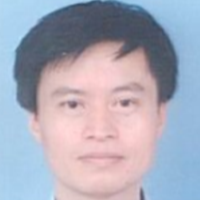International Journal of Intelligent Systems and Applications (IJISA)
IJISA Vol. 7, No. 5, 8 Apr. 2015
Cover page and Table of Contents: PDF (size: 433KB)
The Research of Fuzzy Variable Transmission Ratio for Steer-by-wire System of Electric Forklift
Full Text (PDF, 433KB), PP.31-39
Views: 0 Downloads: 0
Author(s)
Index Terms
Electric Forklift, SBW System, Variable Transmission Ratio, Dynamic Correction of Yaw Velocity
Abstract
Combining with the TE30 electric forklift produced by an enterprise, the principle of Steer-by-wire (SBW) system, steering motion state, ideal steering ratio are analyzed and studied. The biggest characteristic of SBW system is that the transmission ratio is free to design. Based on the establishment of two-degree-freedom linear model of Forklift, the paper designed the nonlinear transmission ratio function on vehicle speed and steering angle with the application of fuzzy control rules. The simulation results show that the fuzzy variable transmission ratio can make the yaw velocity gain tend to be constant, also can make Forklift light sensitive at low speeds and steady heavy at high speed. In order to ensure that the yaw velocity gain does not vary with the change of speed and steering angle, this paper presents a dynamic correction control strategy based on the steady-state control for Forklift. The simulation results show that the amplitudes of yaw velocity and sideslip angle are reduced with the dynamic correction of yaw velocity feedback, also the handling stability is improved.
Cite This Paper
Benxian Xiao, "The Research of Fuzzy Variable Transmission Ratio for Steer-by-wire System of Electric Forklift", International Journal of Intelligent Systems and Applications(IJISA), vol.7, no.5, pp.31-39, 2015. DOI:10.5815/ijisa.2015.05.05
Reference
[1]Pan Luxi. “Research of the Forklift Power Assisted Steering System based on Speed Control of Safety Steering,”. Anhui, Hefei: Hefei University of Technology, Master's Degree Thesis, 2014. (in Chinese)
[2]Wu Xinli, Luan Ying, Yao Gang. “Discussion on Several Control Forms of Electric Forklift Steering System,” Logistics technology, pp. 43-45, May 2011. (in Chinese)
[3]Stanton N.A., Marsden P. “From fly-by-wire to drive-by-wire: Safety implications of automation in vehicles,” Safety Science, vol. 24, pp.35-49, January 1996.
[4]Halton M., Hayes M.J., Iordanov P. “State-space μ analysis for an experimental drive-by-wire vehicle,” International Journal of Robust and Nonlinear Control, vol. 18, pp. 975-992, September 2008.
[5]Howser Gerry, McMillin Bruce. “Modeling and reasoning about the security of drive-by-wire automobile systems,” International Journal of Critical Infrastructure Protection, vol. 5, pp. 127-134, Apirl 2012.
[6]Wu Jianan. “Research on Control Strategy of Steer-by-wire System for Electric Forklift,” Anhui, Hefei: Hefei University of Technology, Master's Degree Thesis, 2014. (in Chinese)
[7]Qin Xubai. “Modeling of Four-wheel Steering Car Virtual Model and Dynamics Simulation,” Jiang Su, Nan Jing: Southeast University, Master's Degree Thesis, 2003. (in Chinese)
[8]Yu Leiyan, Lin Yi, Shi Guobiao. “Research of Steer-by-wire System’s Steering Ratio,” Transactions of the Chinese Society for Agricultural Machinery, vol. 38, pp. 190-192, August 2007. (in Chinese)
[9]Yao Jiangyun, Kong Feng, Wu Fangyuan. “Research on Intelligent Control Strategy for Steering Ratio of Steer-by-wire System,” Computer Measurement &Control, vol. 20, pp. 678-686, March 2012. (in Chinese)
[10]Liu yong. “Analysis of Automotive Steering-by-wire System,” Hube, Wuhan, Wuhan University of Technology, Master's Degree Thesis, 2005. (in Chinese)
[11]Zheng Hongyu. “Research on Road Feeling and Active Steering Control Strategy for Vehicle Steer-By-Wire System,” Jilin University, Master's Degree Thesis, 2009. (in Chinese)
[12]Baslamisli S.C., Polat I., Kose I.E. “Gain Scheduled Active Steering Control Based on a Parametric Bicycle Model,” Proceedings of the 2007 IEEE Intelligent Vehicles Symposium, Istanbul, Turkey, 2007:1168-1173.
[13]Basa K., Zemva A. “Simulation and Verification of a Dynamic Model of the Electric Forklift Truck,” Intelligent Automation and Soft Computing, vol. 17, pp.13-30, January 2011.
[14]Wen Yi. “Control Method and Simulation Analysis of Electric Power Steering System on Car,”. Guangdong, Guangzhou: South China University of Technology, Master's Degree Thesis, 2010. (in Chinese)
[15]Ou Yanghai. “Study of Control Algorithm for Steer by Wire,” Hube, Wuhan: Wuhan University of Technology, Master's Degree Thesis, 2010. (in Chinese)
[16]Li Hongming, Bi Xiang, Wei Zhenchun, etc. “Research on Rule Description Method based on Fuzzy Control,” Journal of Hefei University of Technology, vol. 34, pp. 493-496, Apirl 2011. (in Chinese)
[17]Anupama Kaushik, A.K. Soni, Rachna Soni. “A Type-2 Fuzzy Logic Based Framework for Function Points,” I.J. Intelligent Systems and Applications, vol. 5, pp. 74-82, March 2013.
[18]Azita Yazdanpanah, Farzin Piltan, Ali Roshanzamir, Marjan Mirshekari, Narges Gholami mozafari. “Design PID Baseline Fuzzy Tuning Proportional-Derivative Coefficient Nonlinear Controller with Application to Continuum Robot,” I.J. Intelligent Systems and Applications, vol. 6, pp. 90-100, May 2014.
[19]Zong Changfu, Zheng Hongyu, Tian Chengwei, etc. “Steady-state Gain and Dynamic Feedback Correction Algorithm for Steer-by-wire,” Automotive Engineering, vol.29, pp. 686-691, August 2007. (in Chinese)
[20]Zheng Hongyu, Zong Changfu, Tian Chengwei, etc. “Control Algorithm for Steer-by-wire System with Ideal Steering Ratio,” Journal of Jilin University (Engineering and Technology Edition), vol.37, pp. 1230-1235, June 2007. (in Chinese).
